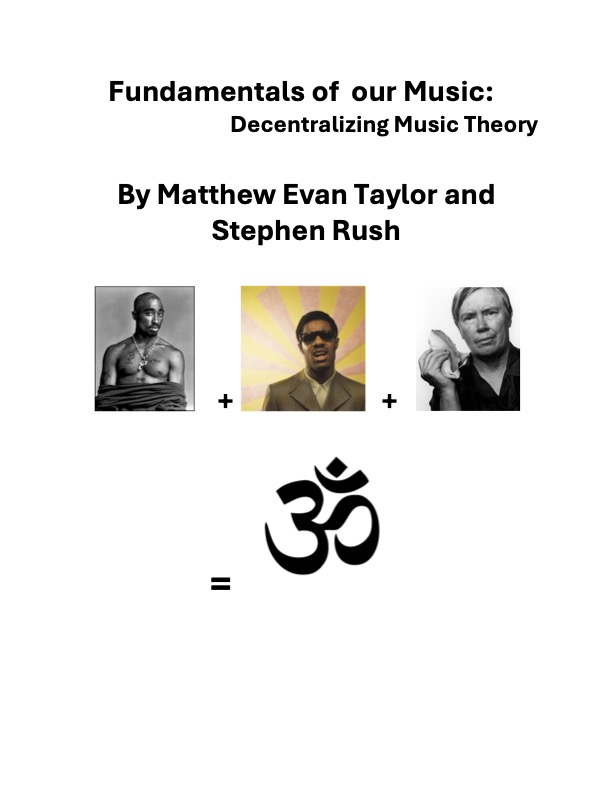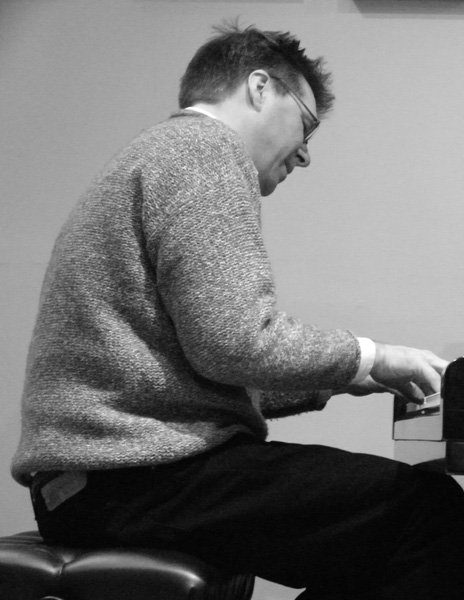—-in Development)—-

(taught since 2019)
The PURPOSE AND REASON AND NEED FOR THE CLASS and the BOOK – “Experiential Music Theory”: (send complaints/praises/reactions to srush@umich.edu)
What is the current demographic for people of color in the USA alone? The non-Hispanic white population in the USA is supposed to be below 50% by 2045. (source). The current breakdown of gender in the USA is an almost even 50-50 split. What does any of this have to do with music?Answer? Everything! If people are the ones making music (or birds and coyotes), then we need to discuss the Fundamentals of Music in terms of race and gender. We should include the majority population in the discussion, and this will cause a difficult but possible reframing of the basic materials for music – rhythm, melody, harmony and timbre.
There are plenty of “systems” that could be explored to accomplish the objective stated above, and usually those systems are under the purview of people often called “Ethnomusicologists”. Even that very term is now antiquated, because it assumes that “ethnic” music is “foreign” to most of “us”. Think about the “Ethnic Food Aisle” in your supermarket – if it even has one. Worse – “international”. How is this food “international” if it’s what you grew up eating, and you grew up in Brooklyn, or Ames, Iowa? Worse, what does “Ethnic” mean? Aren’t we allEthnic. Surely I am: Swiss/Irish. There is nothing I can do about that. I am not Botawatomi, which is what would be indigenousto where I live. If I am not Botawatomi, then I am “international” or “ethnic” in relation to my home. And yet, I wouldn’t call my music (or my diet) Ethnic.
Now boomerang back (with your dijeridoo in hand) to music. Usually such books as this would start with things like explanation of the major scale, or worse, how pianos are organized (1/2-steps and black and white notes, already a problematic space). Then, maybe, a discussion of the harmonic series, with it’s “proof” that the major scale is nicely implied in there somewhere. Maybe, but so is “Lydian Dominant” or an “out-of-tune major/minor scale” known as the Blues scale. An academic world in which the Blues Scale is out-of-tune is not a safe world for anyone of African descent, and according to current (meaning 20thcentury) theories of human evolution we allare of African descent. The problem is deep here. Interestingly enough, all of the Indian Ragas (in the Carnatic or Hindustani system) are implied by the Overtone series, so that’s where this book will go. More is better, and the predisposition toward the major/minor scales creates a false dichotomy (happy and sad?), and also a push cleanly toward Western European musical paradigms – about to be called Ethnic (by 2045 if the US Census Bureau has it right). I hope, then, it is clear, that we must find a new path to the discussion about pitch, melody and scales (ragas). And that urgency is propelled by the issue of race.
NUTS AND BOLTS – CLASS OBJECTIVES:
The class will attempt to bridge the gaps between listening, emotion and sound, by exploring the following: Meditation with special emphasis on “the Om,” chords in relation to Stevie Wonder and your own music, Hip-Hop grooves, “Latin American” grooves, the South Indian systems of Tala and Raga (rhythm and mode) – also in relation to emotion. Readings, journaling and composition assignments (including field recordings) will be the focus of the grading. There will be quizzes based on class discussion as well. Student should hope to feel and hear music better after one semester.
